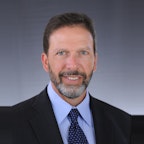Smart Building Controls

About this course
You'll learn how Energy Management and Information Systems differ from traditional Building Automation Systems, understand the three-layer architecture of smart building platforms, develop cybersecurity strategies tailored to building control systems, and discover how occupancy-centric controls can dramatically reduce energy consumption while maintaining comfort. Whether you're seeking to enhance operational efficiency, improve occupant satisfaction, or reduce environmental impact, this training equips you with the expertise to transform your buildings into responsive, intelligent environments.
This course is included in this bundle
Course outline
Module 1 • 2 assignments
Advanced building monitoring and controls
Module 2 • 2 assignments
Smart building control platform
Module 3 • 2 assignments
Smart building control platform cybersecurity
Module 4 • 2 assignments
Smart building control methods
Module 5 • 2 assignments
Occupant-centric control
Conclusion • 2 assignments
Feedback and Additional Resources
Authors
Slipstream creates, tests, delivers, and scales the next generation of energy efficiency and renewable energy programs that move us farther, faster toward a clean energy economy. Slipstream partners with utilities, local and state governments, regulatory agencies and other organizations to inspire new solutions to big energy challenges. With decades of experience...

Joe Zhou, PhD, PE, CEM
Xiaohui “Joe” Zhou is a Director of Research and Innovation at Slipstream, headquartered in Madison, WI. Joe has 30+ years of experience in commercial building controls and his current areas of research focus on emerging technology field testing and verification. Before joining Slipstream, he worked for several organizations, including Iowa Energy Center and Johnson...

Ron Bernstein
Ron Bernstein is CEO and Principal Engineer of RBCG Consulting, providing consulting, engineering, research, and educational services to organizations needing help navigating their energy and automation strategy. RBCG works with end users, owners, specifiers, suppliers, and integrators to develop IoT, interoperability, and open systems approaches to building automation,...

Dr. Bing Dong
Dr. Bing Dong is an Associate Professor at Syracuse University in the Department of Mechanical and Aerospace Engineering. He is also the Associate Director of the Syracuse Center of Excellence in Energy and Environmental Systems, and the lead of BESTlab. He has more than 20 years’ experience and contributions in research and education, including 1) occupant behavior...
